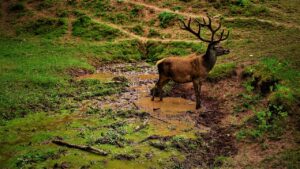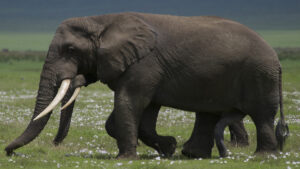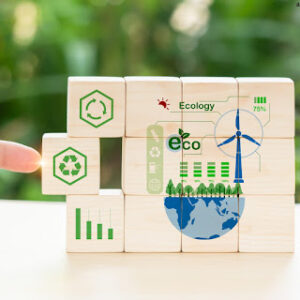
- +254708120315
- vikimsolutions@gmail.com
- Nairobi, Kenya
Biodiversity, which is the variability of living organisms across the globe, is crucial to the existence and sustenance of ecosystems, the supply of services to people as well as formation of economic sector. Biodiversity conservation therefore covers strategies that are aimed at the preservation of the suite of species, ecosystems, and genetic variety on our planet. Here, the focus is on positive changes in business decision-making, with issues on how sustainable development, vulnerability, and well-being are promoted by preserving the world’s variety of life.
To begin with, let us understand some of the economic benefits from the conservation of the biodiversities. Having established some of the economic advantages that accrue from the conservation of biodiversities let us look at the other benefits in details.
A functional ecosystem accommodated by bio-diversity has strong capabilities in providing services which are inmost importance to man. These services include:
– Pollination: In today’s farming, diverse cultivated crops which requires pollinator either bees, butterflies or even birds plays significant role in pollination process. Crop pollination by these animals is worth billions of dollars globally with many crops being heavily dependent on animals for pollination.
– Water Regulation: Heavy forests, swamps, and other ecological systems control water distribution and quality apart from lessening the effects of floods and water shortage. These service is very vital in the support of agricultural land, as a source of drinking water supply and to industries.
– Climate Regulation: Terrestrial ecosystems such as forests and oceans, also have a significant proportion of contribution on climate since they take and store carbon dioxide. This has the effect of reducing Green House Gas emissions thus minimize impacts of climate change while cutting on the expenses of meeting emergencies fostered by climate change.
– Nutrient Cycling: Microorganisms act upon organic materials such as decomposing wood and leaf litter, thereby cycling nutrients, contributing to crop production.
– Natural Resources: Biodiversity therefore offers a wide range of products from natural resources including timber, medicinal plant products and genetic resources for agricultural and pharmaceutical practices.

Biodiversity is a source of economic value in various industries: Biodiversity is a source of economic value in various industries:
– Tourism and Recreation: The spectacular and beautiful diversities like coral reef, rain forest and national parks and other wildlife attractions are the major attractions for the tourist in this world. It serves as an important source of revenues, helps in the development of the economy and stimulates the demand for employment.
Conserved ecosystems and biodiversity contribute to resilience against environmental changes and disasters: Conserved ecosystems and biodiversity contribute to resilience against environmental changes and disasters:
– Climate Change Adaptation: Globe’s diverse ecosystems are more apt to adapt to and bounce back from climate effects such as storms, floods and droughts. For instance, mangrove forests and coral reefs play roles such as water breakers that slow down the effects of floods along the coastlines.
– Disease Control: According to the theory, the conservation of biological diversity can suppress the occurrence of disease-creating pests and pathogens by checking their unnatural multiplication through the natural balance of ecosystems.
– Food Security: Hence, food security is supported by biodiversity since it offers a variety food types that are nourishing to consumers, especially for countries that are at the mercy of climate change and environmental pollution.
Biodiversity conservation is closely linked to achieving the United Nations Sustainable Development Goals (SDGs), particularly: Biodiversity conservation is closely linked to achieving the United Nations Sustainable Development Goals (SDGs), particularly:
– Goal 2: Zero Hunger: The first item on this Sustainable Development Goal is Biodiversity in agriculture which aims at making sure that there is variety in the foods available and that farming is done in the right way that will not harm the environment in future.
– Goal 6: The ecosystems help regulate the flow of water and also ensure that the water that is available is clean.
– Goal 13: Mitigations: Help in conserving forests as they are carbon sinks and help in regulating the effects of climate change.
– Goal 15: Living on Land: Sustainable land management and conservation of habitats and ecosystem, enable the protection of the biophysical components.
Threats to Biodiversity Conservation: Issues Concerning Biodiversity
Despite the economic benefits, biodiversity faces numerous threats that undermine its conservation: Despite the economic benefits, biodiversity faces numerous threats that undermine its conservation:
– Habitat Loss and Fragmentation: Habitat loss through destruction, conversion to production agriculture or urban land, and population pressure on forest and wildlife resources leads to degradation and fragmentation of ecosystems and thus declines in species richness.

– Climate Change: Countries around the world are also gradually experiencing increased temperatures, varying precipitation and unpredictable patterns of weather events which are likely to affect species and ecosystems.




Copyright © 2024 Vikim Solutions. All rights reserved.
5 Responses
Inspiring
Your blog is incredibly educational. I always learn something new when I read.
Your blog keeps me engaged from start to finish. I can never scroll away without reading your entire post.
https://vitz.ru/forums/index.php?autocom=gallery&req=si&img=4804
http://wish-club.ru/forums/index.php?autocom=gallery&req=si&img=5281